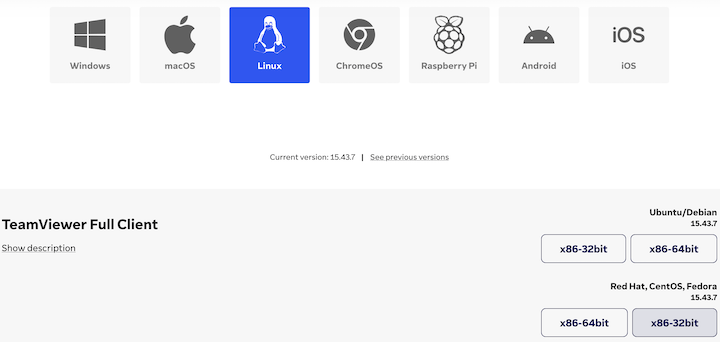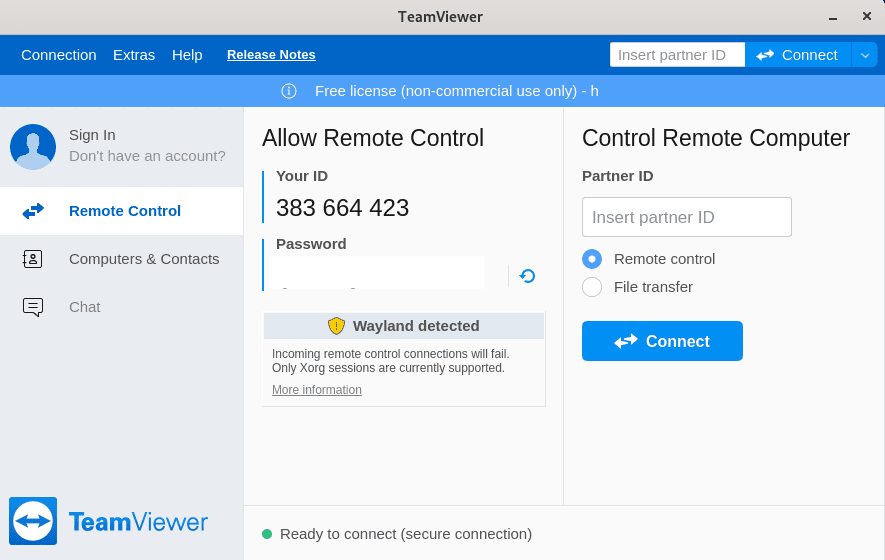How To Install TeamViewer on Fedora 41

In today’s digital landscape, remote access tools have become essential for both personal and professional use. One of the most popular solutions is TeamViewer, which allows users to connect to other computers, share screens, and transfer files seamlessly. This guide will walk you through the step-by-step process of installing TeamViewer on Fedora 41, ensuring that you can take full advantage of its powerful features.
Understanding TeamViewer
What is TeamViewer?
TeamViewer is a robust software application that enables remote control, desktop sharing, online meetings, and file transfer. It is widely used for remote technical support and collaboration across various platforms. With its user-friendly interface and reliable performance, TeamViewer has established itself as a go-to solution for individuals and businesses alike.
System Requirements
Before installing TeamViewer on Fedora 41, it’s important to ensure that your system meets the necessary requirements:
- Operating System: Fedora 41 (64-bit)
- RAM: Minimum 1 GB (2 GB recommended)
- Disk Space: At least 200 MB free
- Internet Connection: Required for installation and operation
Preparing Your System for Installation
Updating Fedora
Keeping your system updated is crucial for security and performance. Before proceeding with the installation of TeamViewer, ensure that your Fedora system is up to date. Open the terminal and run the following command:
sudo dnf updateThis command will check for updates and install any available packages. It’s a good practice to reboot your system after updating.
Installing Required Tools
You may need certain tools to facilitate the installation process. One such tool is wget, which allows you to download files directly from the terminal. To install wget, execute the following command:
sudo dnf install wgetThis ensures that you have everything you need to download the TeamViewer package efficiently.
Downloading TeamViewer
Accessing the Official Download Page
The next step is to download the TeamViewer RPM package. You can do this by visiting the official TeamViewer website. However, for convenience, you can also use wget to download it directly from the terminal.
Using wget to Download TeamViewer
To download the latest version of TeamViewer for Fedora, run the following command in your terminal:
wget https://download.teamviewer.com/download/linux/teamviewer.x86_64.rpmThis command fetches the RPM package directly from TeamViewer’s servers, ensuring that you have the most recent version available.

Installing TeamViewer on Fedora 41
Using DNF to Install TeamViewer
Once you have downloaded the RPM package, it’s time to install it using DNF (Dandified YUM), which is the default package manager for Fedora. Run this command in your terminal:
sudo dnf install ./teamviewer.x86_64.rpmThis command tells DNF to install the downloaded RPM file. During installation, DNF will automatically resolve any dependencies required by TeamViewer.
Handling Installation Errors
If you encounter any errors during installation, they are often related to missing dependencies or conflicts with existing packages. Here are some common issues and their solutions:
- Error: Missing dependencies: If DNF reports missing dependencies, you can install them manually using:
sudo dnf install [missing-package] - Error: Signature verification failed: This may occur if your system does not recognize the GPG key used by TeamViewer. You can import the key using:
wget -qO - https://download.teamviewer.com/download/linux/signature/TeamViewer2017.asc | sudo rpm --import -
Verifying Installation
After installation is complete, it’s important to verify that TeamViewer has been installed correctly. You can do this by running:
rpm -qi teamviewerThis command will display information about the installed package, confirming its presence on your system.
Launching TeamViewer
Starting TeamViewer from the Terminal
You can launch TeamViewer directly from your terminal by typing:
teamviewerThis command opens the TeamViewer application, allowing you to start using its features immediately.
First-Time Setup
The first time you launch TeamViewer, you will be prompted to accept the license agreement. After accepting it, you may need to set up a secure password for unattended access if desired. This enhances security when accessing your machine remotely.

Troubleshooting Common Issues
Installation Issues
If you encounter problems during installation or while launching TeamViewer, consider these troubleshooting tips:
- No GUI Launch: If TeamViewer does not launch from the terminal or GUI, ensure that all dependencies are installed and try running:
xhost +local:root - Error: “No connection could be established”: Check your internet connection and firewall settings. Ensure that ports used by TeamViewer (TCP/UDP 5938) are open.
- Error: “TeamViewer is already running”: If this message appears when trying to launch again, check if there are any existing instances running in the background using:
ps aux | grep teamviewer
Running TeamViewer on Wayland vs. X11
If you’re using Wayland as your display server (the default in many modern distributions), you might experience issues with screen sharing or remote control features in TeamViewer. It’s recommended to switch to X11 for optimal performance with remote desktop applications.
Tips for Using TeamViewer on Fedora
- Simplify Access: Set up unattended access if you frequently connect to a specific machine without needing someone on-site.
- User Management: Utilize user management features within TeamViewer to manage permissions effectively when collaborating with multiple users.
- Securitization: Enable two-factor authentication (2FA) in your account settings for enhanced security against unauthorized access.
- Scheduling Sessions: Use scheduling features within TeamViewer for regular maintenance checks or support sessions with clients or colleagues.
- Troubleshooting Resources: Familiarize yourself with official documentation and community forums for troubleshooting tips and best practices.
Congratulations! You have successfully installed TeamViewer. Thanks for using this tutorial for installing the TeamViewer remote desktop software on your Fedora 41 system. For additional or useful information, we recommend you check the official TeamViewer website.